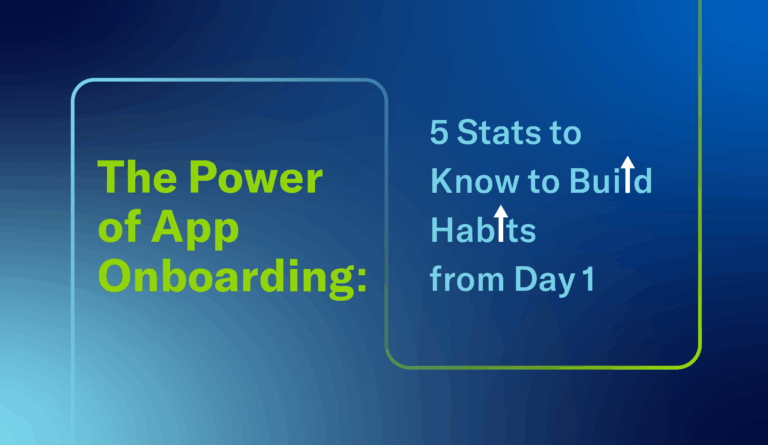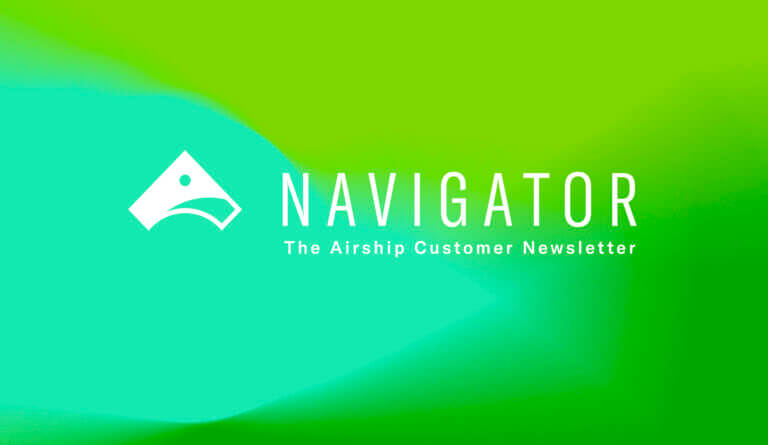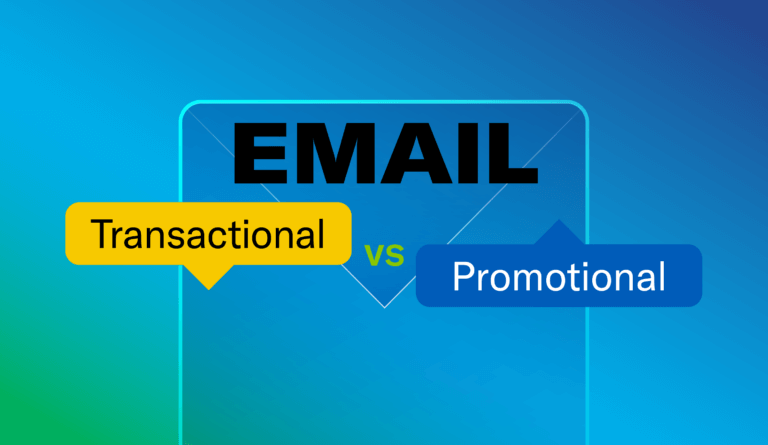
10 Re-Engagement Email Examples to Win Back Customers & Grow Revenue

Abbie Baxter Content Marketing Manager, Airship
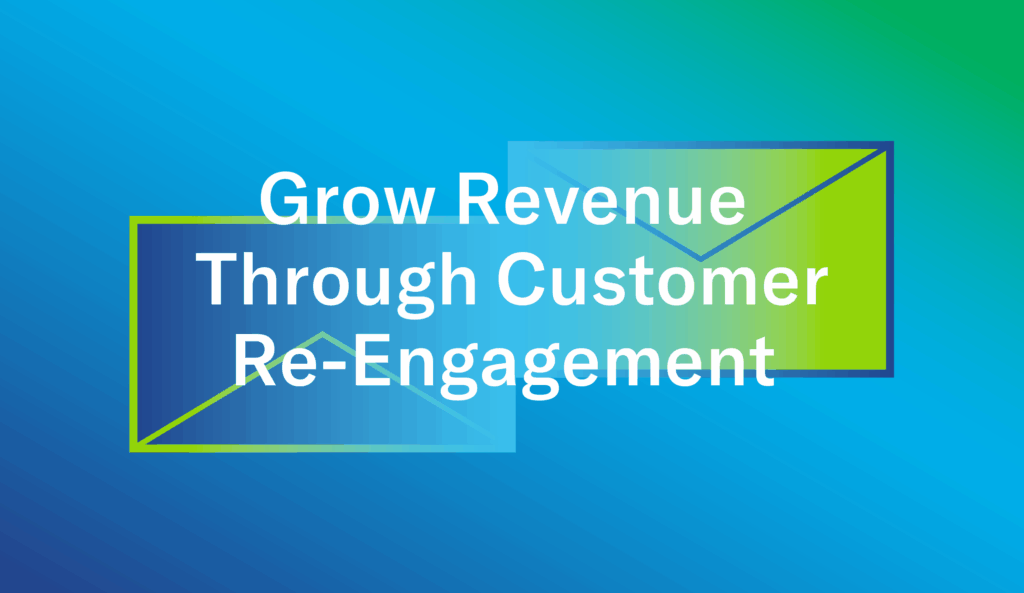
Share to my network
In this article
Categories
Book a meeting
Connect with our team of experts to discuss your conversion and loyalty goals, and how we can help you achieve them faster.
Book a meetingCustomers leaving you on read? Airship research found that an overwhelming 79% of the consumers ignore or delete marketing emails from brands they’ve subscribed to half the time or more. Information overload, saturated inboxes and waning attention spans have driven a steady decline in open rates over the last five years, putting pressure on brands to closely monitor engagement and incentivize those at-risk of churning to stay before its too late. That’s why a re-engagement email campaign should be a staple in your strategy.
Rather than paying to acquire new customers, re-engagement campaigns nurture existing relationships. More importantly, they protect your sender reputation and improve overall deliverability. However, not all re-engagement campaigns are created equal. To help you design a campaign that converts, we’ve curated a list of our top re-engagement email examples and trusted tips for crafting a high-performing campaign.
What Are Re-Engagement Emails?
A re-engagement email is a message that aims to reconnect with inactive subscribers and encourage them to take an action with your brand. When used strategically, re-engagement emails remind customers of your brand’s value, rekindle their interest and prevent them from opting out of email correspondence overall.
The Value of Re-engagement Emails
Customer engagement patterns fluctuate over time. Re-engagement emails allow you to continue moving customers through the lifecycle toward conversion and long-term loyalty, even when they begin to drop off. The good news? Marketing to inactive customers is far easier than marketing to an entirely new audience because they have baseline knowledge of your brand and have likely signaled interest in the past.
With a re-engagement email campaign, you can:
- Encourage inactive subscribers to return before they decide to part ways permanently
- Drive new conversions from past customers before they turn to a competitor
- Identify inactive subscribers to target with your email marketing strategy
- Improve your sender reputation and optimize deliverability
Re-Engagement Email Examples to Inspire Your Next Campaign
There are many ways to approach a re-engagement email campaign, but your guiding principle should always be to deliver concrete value to customers. This requires a strategic approach prioritizing personalization and relevance to deliver a rewarding experience that incentivizes re-engagement. The following examples offer proven strategies to rekindle your subscribers’ interest and loyalty.
1. The “We Miss You” Email
Every customer wants to feel appreciated for their business. Acknowledging that they haven’t been engaged is a great way to demonstrate that you see them as an individual and to remind them why they chose your brand in the first place. Offer a discount on one of their favorite products or highlight new releases that might be of interest based on past purchases to show them you know them.
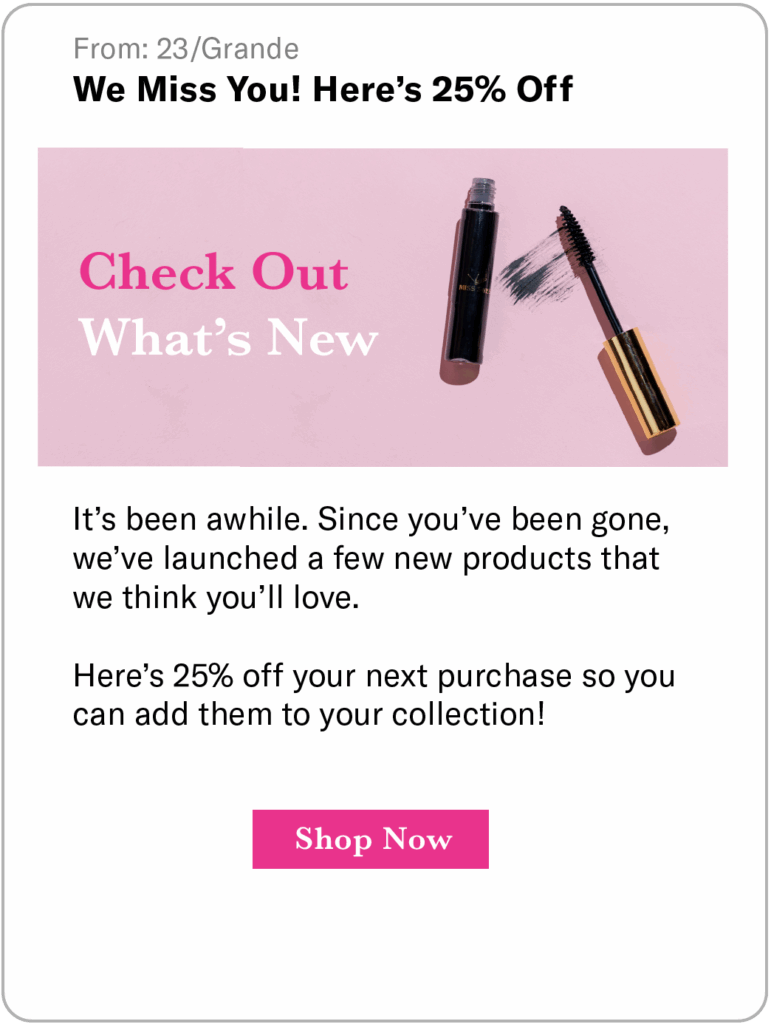
2. Special Offers & Incentives
Everyone loves a great deal. Give your inactive customers an extra push to re-engage with your brand by offering an incentive or limited-time offer. Creating a sense of urgency makes your email harder to ignore. Prioritize clear and concise copy, making it clear the concrete value customers can unlock from re-engaging with your brand.
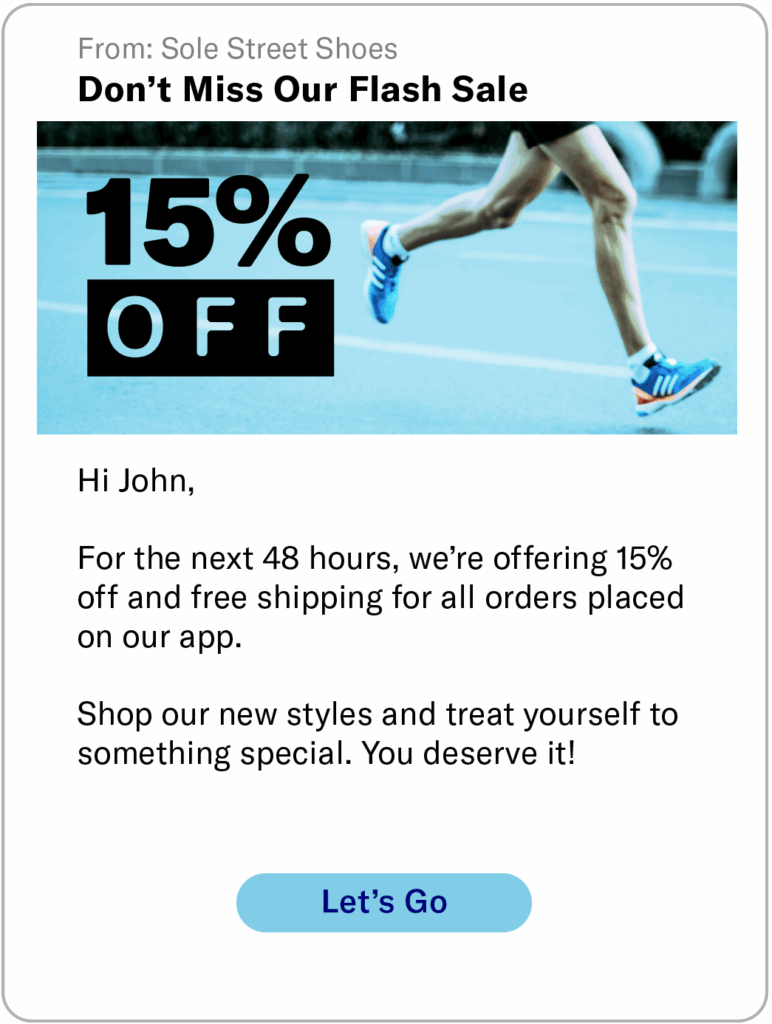
3. Special Occasion or Milestone
Celebrating your customers for a special occasion, like a birthday or the anniversary of when they became a customer, is a great way to show your appreciation. You can also congratulate them when they achieve a particular milestone related to your product offering..

Need more inspiration? Altitude Award Winner ASDA delivered personalized monthly rewards wrap-ups to illustrate customer’s total earnings and activity.
4. First Look of New Products or Content
Create curiosity for your email subscribers by sharing a sneak preview of a new product, upcoming features or exclusive content to drive interest in your brand. Bonus points if you’re able to tailor those recommendations to product or content preferences they have shared with you.
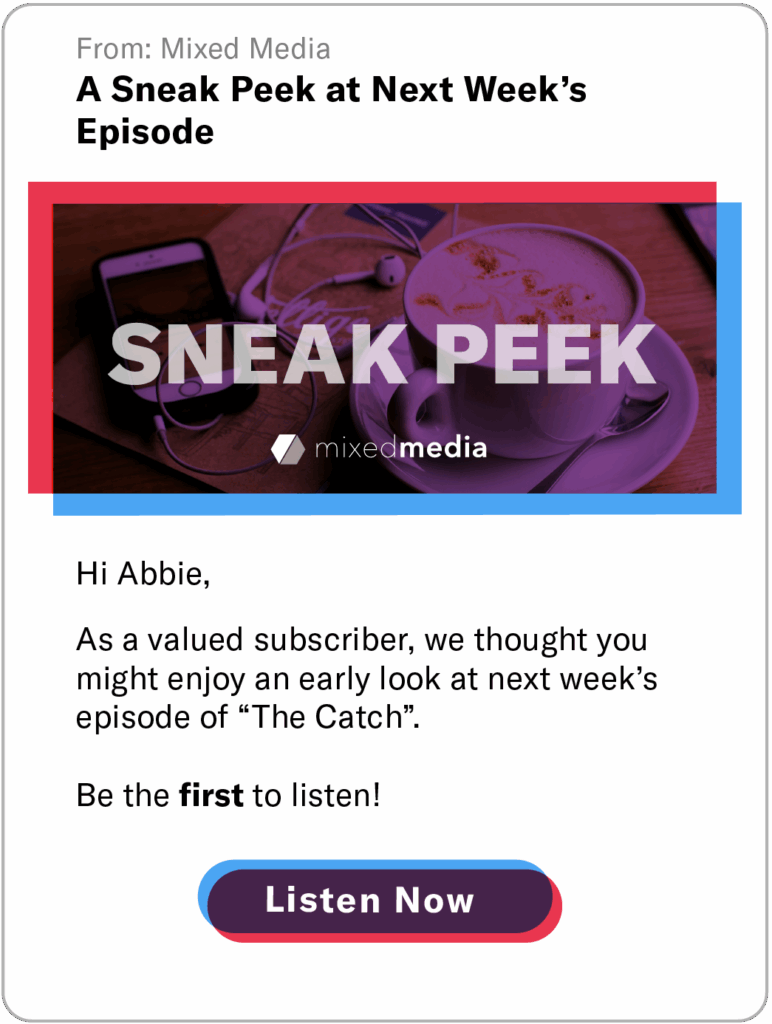
5. Social Proof to Build Credibility
Sometimes the most effective strategy is to lean on existing customers to do the talking for you. Leveraging social proof like customer testimonials or reviews is a great way to restore trust and confidence in your brand.
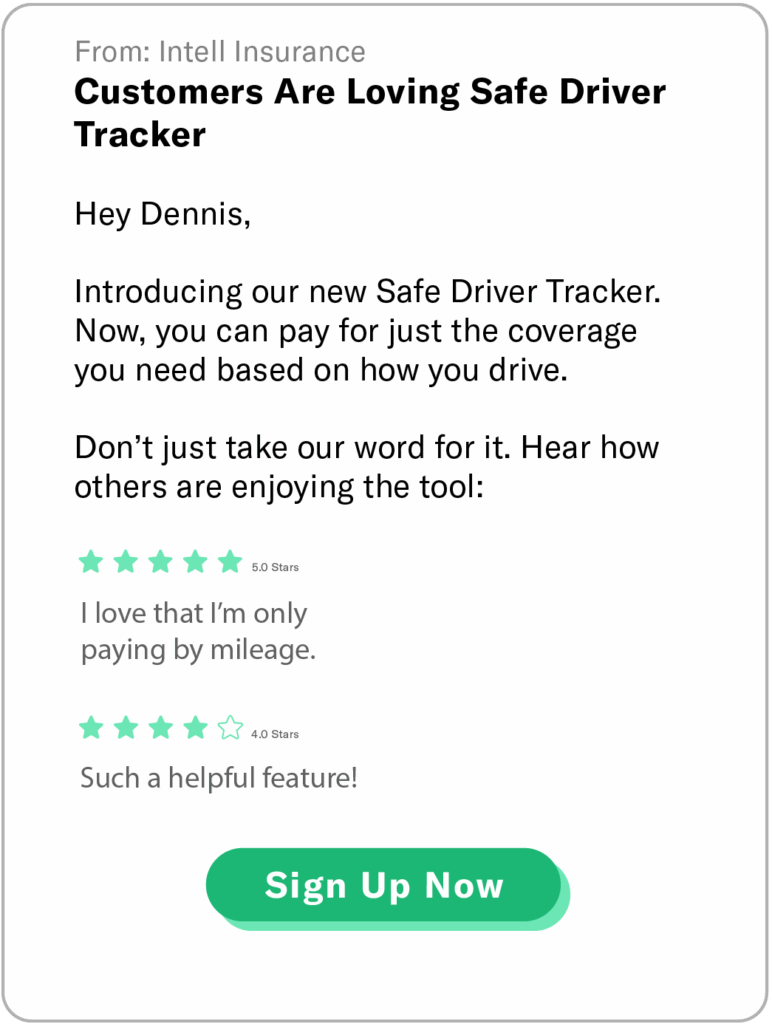
6. Survey or Feedback Request
Take the guesswork out of why customers aren’t engaging with your brand by sharing a survey to gather direct feedback and understand why they lost interest. Or incentivize customers to share zero-party data that can be used to create more targeted experiences.
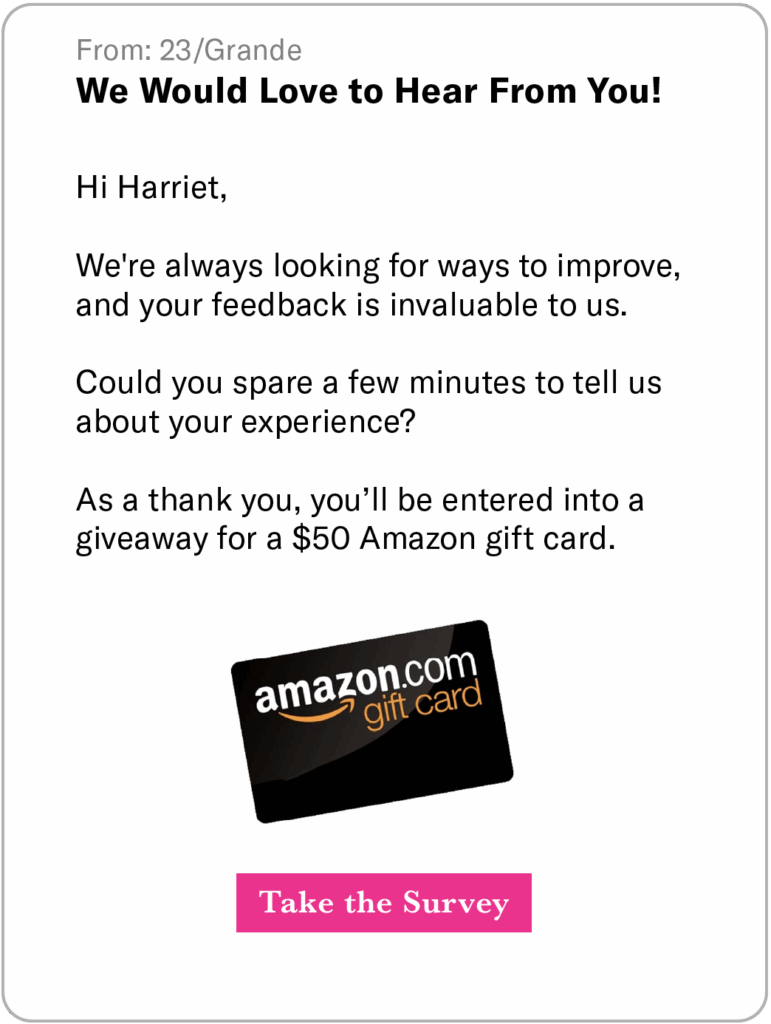
Online marketplace bol encouraged customers to share their interests in products and, in turn, receive exclusive alerts when those products were discounted. It’s important to make it clear what value customers will receive in return for taking the time to complete the survey.
7. Last Chance or FOMO Email
Scarcity and FOMO are powerful motivators. If a subscriber hasn’t engaged with your brand in a while, send them a last-chance email and share what they will miss out on if they don’t act immediately. This could be exclusive access to new products or a time-sensitive discount. Don’t forget to A/B test subject lines and body copy to refine your messaging and maximize engagement.
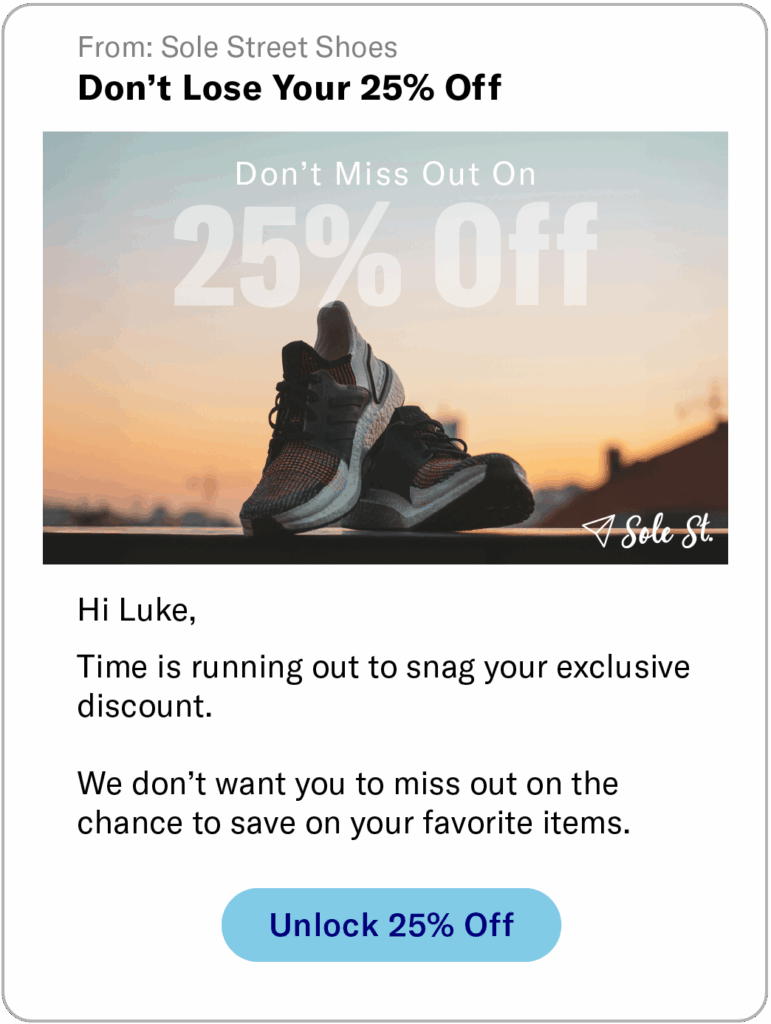
8. Abandoned Cart Recovery Emails
Abandoned carts are a prime opportunity for a re-engagement email. Customers who added items to their cart on your app or website need a reason to complete their purchase. Remind them that they loved the item and offer a perk or discount to incentivize immediate action.
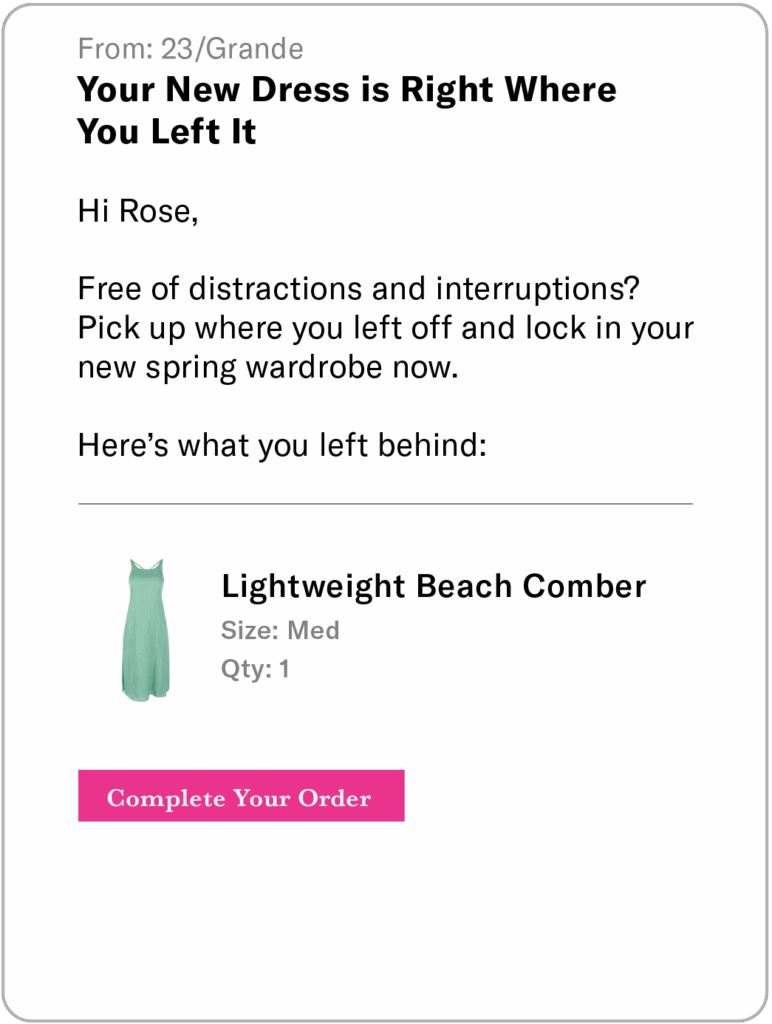
9. Personalized Recommendations
Airship research found that people value personalization based on their past behaviors, purchases and the interests/preferences they share with brands most. Build a framework for capturing zero- and first-party data early in customer relationships to understand what customers want or need, so you can share recommendations that will align with those behaviors and interests when the time comes.
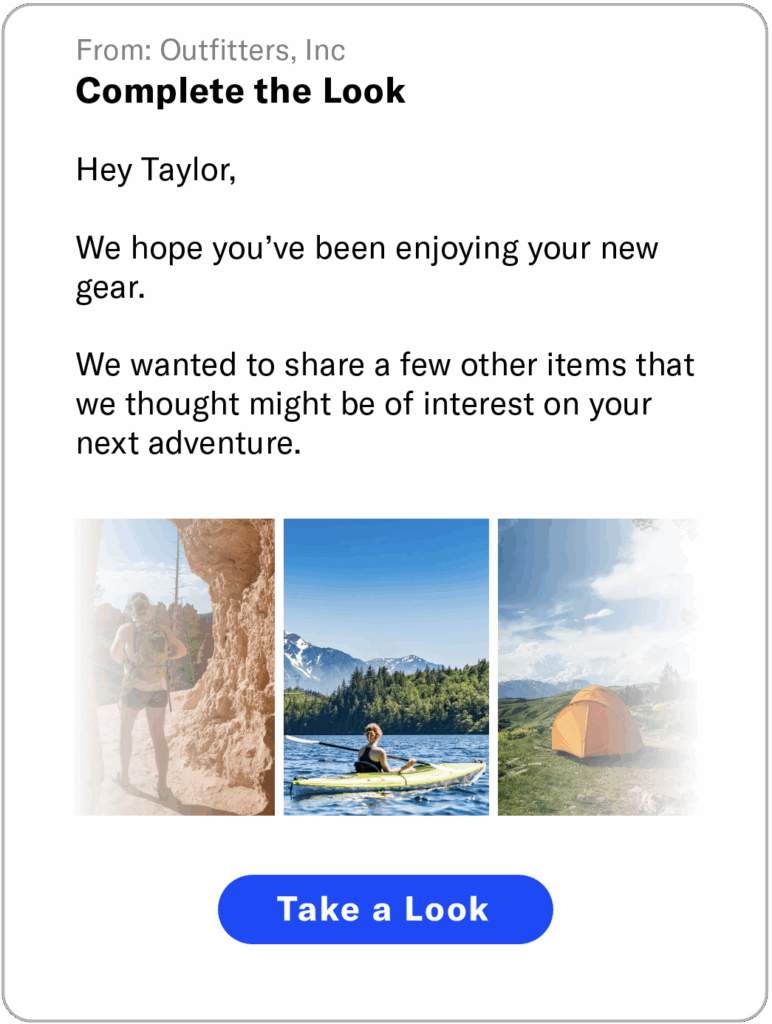
10. Brand Value Proposition
Your customers chose your brand once, so give them a reason to do it again. Remind them of the unique benefits they receive from continuing to engage with your brand over time and the value they unlock through long-term loyalty. This could include loyalty program benefits or added value from ongoing engagement.

Top Tips for Crafting a High-Performing Re-Engagement Email
Get Clear on Your Segmentation Strategy
Divide your list of inactive subscribers into groups based on their inactivity level, demographics and interests. Consider behavioral targeting to reach those that are at-risk of churning or have already dropped off, so you can refine messaging for the exact stage at which they are at in their journey.
Double Down on Email Personalization
A generic email isn’t enough to win back inactive subscribers; you must prioritize email personalization and relevance. Tap into your trove of first-party and zero-party data to deliver highly targeted content that will inspire action. Consider dynamic content leveraging contextual awareness — location, device type, time of day, current browsing behavior and even weather — to meet them with in-the-moment experiences.
Embrace Growth Experimentation
Re-engagement strategies that resonate today won’t necessarily resonate tomorrow. Customers’ preferences and behaviors will always be a moving target, so your re-engagement tactics should continue to evolve too. Continuous experimentation and optimization around message and delivery and segmentation will help you zero in on what delivers the most value for your customers and your business.
Orchestrate Email Within Your Broader Channel Mix
Email doesn’t exist in isolation and it certainly isn’t the only way to reach inactive customers. When integrated and orchestrated effectively with other channels in your mix, email offers a powerful vehicle for advancing customers through the lifecycle to fuel repeat engagement and conversion. For example, send an abandoned cart email to motivate customers to complete their purchase and then back that message up with an in-app promotion once they open it. Strategic cross-channel orchestration can reinforce your message when and where it matters most for your audience, whether that’s SMS, push notifications or in-app messaging.
Win Back Customers and Enhance Your Email Marketing Strategy
Acquisition costs are on the rise, so prioritizing re-engagement should be a top priority. If you’re interested in building an email strategy that turns inactive customers into brand loyalists or would like to better understand how to orchestrate email with other touchpoints, book a meeting with our team of experts and we’ll talk you through it. We would love to connect.
